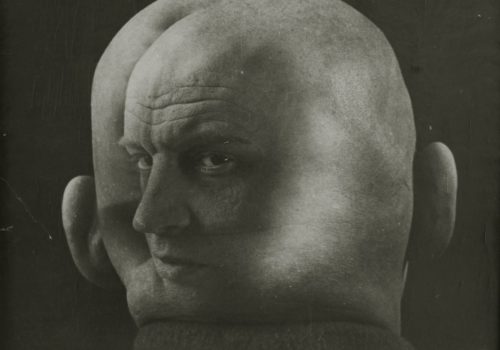Over two hundred previously unseen photographs by Russian artist Alexander Rodchenko, held in private hands until now, presented at newly branded Art Sensus as part of the first comprehensive gallery exhibition devoted to the artist’s photographic work and that of his contemporaries. Curated by John Milner, Rodchenko and his Circle featuredseven hundred powerful photographs revealing the artist’s response to Communism in relation to the professional photographers he worked with: Naum S. Granovsky, Simon Fridland, Max Alpert, Evgeni Khaldei and Georgii Zelma. A body of work from the Vkhutemas school, largely influenced by Rodchenko’s teaching, goes on display for the first time.
Starting off with the group’s diverse propaganda work produced under Lenin and Stalin, the exhibition explores the industrialization of Soviet Russia and the emergence of collective thought – labour workers expanding communications and electricity, factories, crowds and parades – comrades working together towards the communal vision implemented under Stalin’s reign. Some photographers, Alpert and Zelma in particular, also recorded ancient cultures such as the Shamans living in Siberia, an anthropological preview of a society about to be embraced by the Soviet ideology.
While photographers like Fridland, Granovsky and Khaldei were documenting this time period for government news platforms like ITAR-TASS, Izvestia and Pravda, Rodchenko was shooting the era from a personal perspective, applying his background in painting to photography. In comparison to the work of his peers, Rodchenko’s photography was less often restrained by Soviet requirements, though he did become inventively engaged in images of mass parades and spectacular displays of power, politics and sport. He often shot buildings and crowds from dramatic angles and view points, mirroring the geometric elements of his Constructivist painting.
From 1920-1930 Rodchenko served as a professor of Construction, focusing on architecture and product design, at the Vkhutemas school (the Higher State Art and Technical Studios). Established under Lenin, Vkhutemas is now considered the Soviet equivalent to the contemporary German Bauhaus. Here students of Rodchenko, architect Nikolai Ladovsky and others would create hypothetical architectural models, which were then photographed before a background. Never before seen, the photographs of these unrealized architectural designs will be projected upon the gallery wall, demonstrating the Revolutionary ideals of the era.
In addition to his response to commissioned propaganda work, Rodchenko also made portraits of his immediate circle of friends. In an era of collective thought, recognising an individual for fame and talent was dangerous, unless it could somehow be identified with the workers’ cause. A few achieved this, such as the poet Vladimir Mayakovsky, and his portrait appears amongst photographs of Rodchenko’s friends and contacts, wife artist Varvara Stepanova, filmmaker Vitaly Zhemchuzny, painter Liubov Popova, writer Osip Brik, his wife Lilya Brik, and others, providing a panorama of the Leftist set of intellectually creative minds with whom Rodchenko was identified.
The 680 photographs on display, mostly unknown to the public, belong to the Tosca Photography Fund. The Fund began in 2005, as a result of Mehmet Dalman and Zelda Cheatle sharing a passion for fine art photography. The fund launched in 2007, acquired approximately 5000 photographs and has exhibited in many museums and institutions in both Europe and USA.
Until March 19
Art Sensus
7 Howick Place
London SW1P 1BB
















